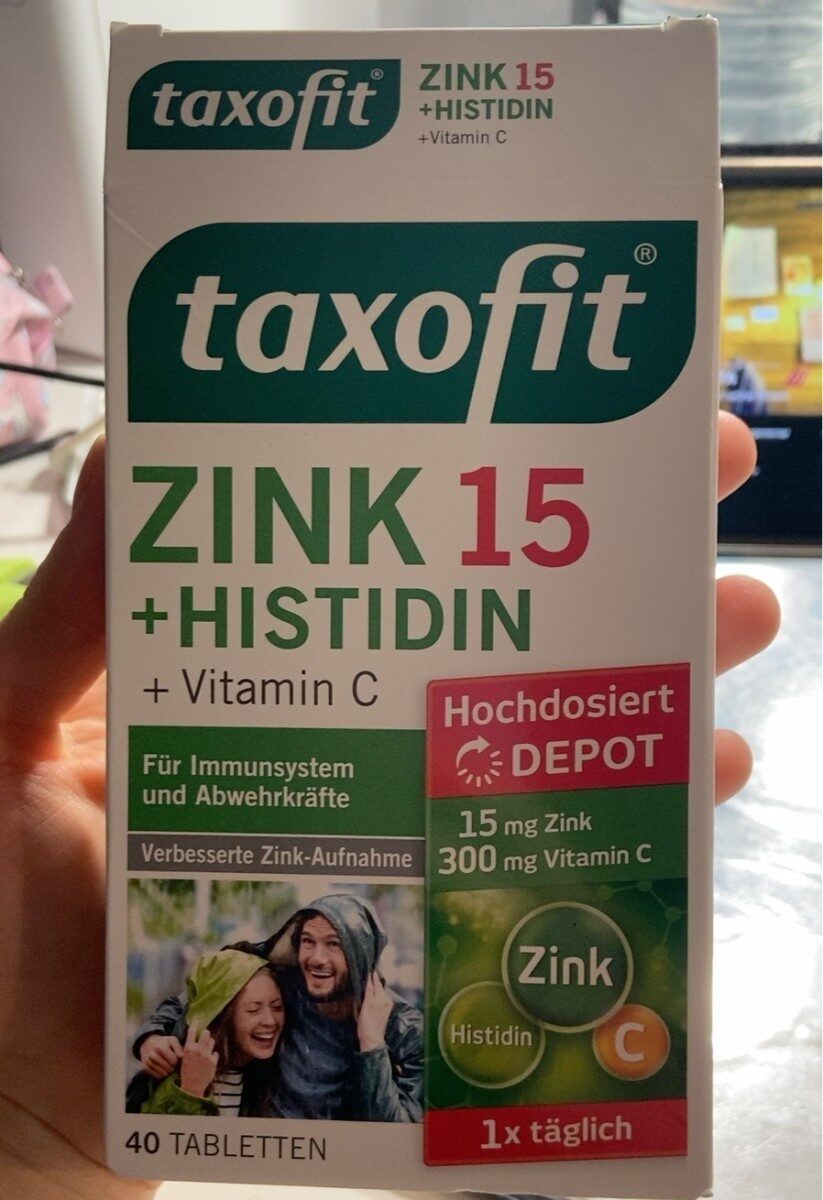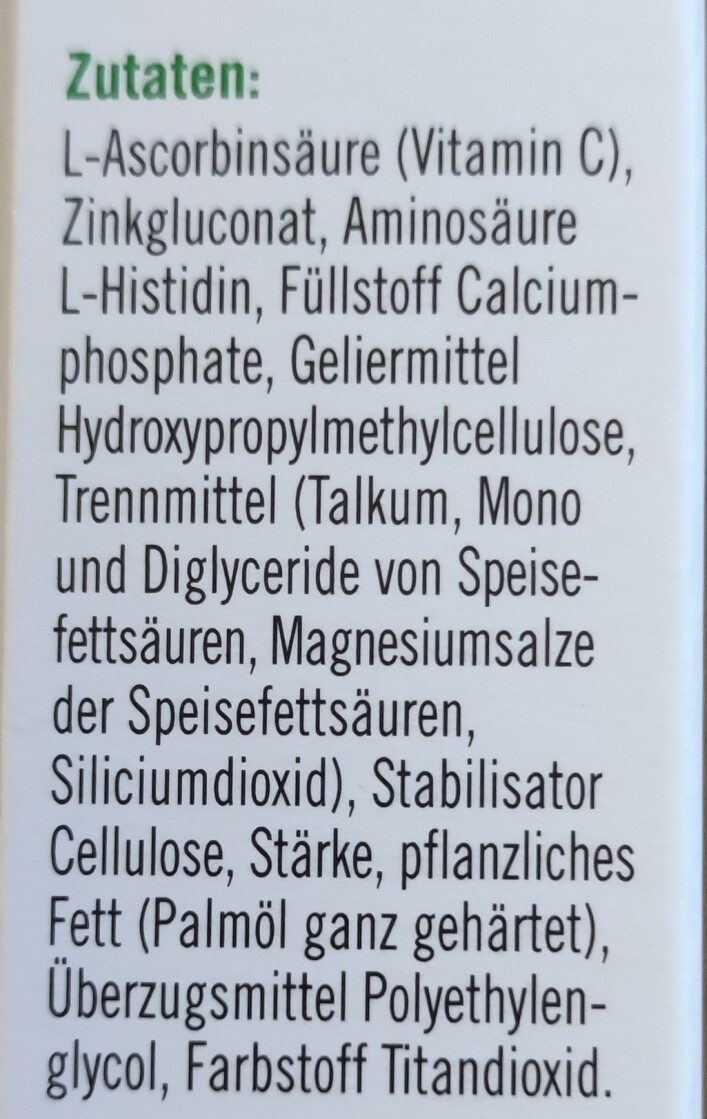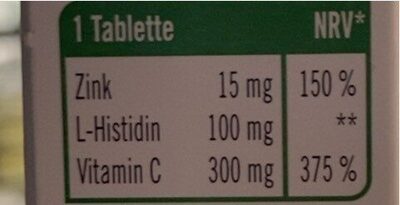TaxoFit Zink15 + Histidin + Vitamin C - 40 Tabletten
This product page is not complete. You can help to complete it by editing it and adding more data from the photos we have, or by taking more photos using the app for Android or iPhone/iPad. Thank you!
×
Barcode: 4008617042877 (EAN / EAN-13)
Quantity: 40 Tabletten
Packaging: Cardboard, Paperboard, de:Kunststoffblister
Brands: Taxofit, Klosterfrau
Categories: Dietary supplements, Vitamins
Labels, certifications, awards:
Low or no sugar, No gluten, Green Dot, No gelatin, No lactose, No sugar
Traceability code: PZN - 10715473
Stores: Dm
Countries where sold: Germany
Matching with your preferences
Health
Food processing
Additives
Ingredients analysis
Environment
Packaging
Transportation
Report a problem
Data sources
Product added on by kiliweb
Last edit of product page on by packbot.
Product page also edited by openfoodfacts-contributors, tenlight, yuka.sY2b0xO6T85zoF3NwEKvlnR7a__6mwyZFxz4lnWB6vDUdqbEOexswY7wAas.









